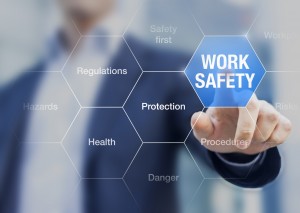Large machines act as one the most important cogs in enabling our industrialised world. Mass manufacturing is possible due to the repetition and consistency of quality that machinery allows. The safety of workplace machinery has come a very long way since the early days of the industrial revolution. In the heyday of 18th-century textile mills, child workers, in particular, were killed or seriously maimed at an alarming rate as a result of injuries from unsafe machines used to manufacture products for the cloth and textile industry. Children were exploited as they could more easily gain access to clean or maintain the machines within the factory, for little or no pay. Machine guards were not made compulsory until 1844. Whilst this provided some protection, it was often tiredness that was the root cause of accidents that occurred, as workers regularly clocked in 12-hour days.
Vast improvements in health and safety
Thankfully, we are no longer in an era of such flagrant disregard for employee safety. Following a concerted effort by regulators and lawmakers in recent decades, workplace accidents involving machinery have plummeted. Between 1974 and 2016, official numbers show a 77% reduction in the number of non-fatal injuries in the workplace. Whilst now much lower, workplace accidents due to machinery still happen. In the year 2015 – 2016, official statistics show that 144 people were killed in workplace accidents, of which nine were caused by contact with moving machinery. Moving machinery also caused 44,000 non-fatal injuries, leading to, on average, eight days of lost working time to recover.
Recent cases of life-changing machinery accidents
As numbers show, despite huge strides being made in the prevalence of injuries being caused by machines, severe cases still happen all too regularly. In March of this year, Javeed Ghaffer, aged 51, was killed whilst working at IFG Drake in Huddersfield. He was accidentally pulled into a machine which is used in the manufacture of fibres and yarns and crushed. The case was referred to the
Health & Safety Executive (HSE) for investigation.
In another case, a farming company in Airdrie pleaded guilty last month to breaching agriculture regulations designed to protect children and the Health and Safety at Work Act. The case related to an accident in which an 8-year-old boy lost part of his leg when he fell from a farm vehicle with a grass cutting machine attached. The HSE stated “it is illegal to allow a child under 13 years old to be carried on a machine such as the ATV in this case. This accident resulted in life-changing injuries that could have been avoided if the appropriate measures had been in place at the time.”
Many potential causes of injury
The range and type of machines that can cause serious injury are vast. Lathes, presses, and machines that cut or grind all have the potential to cause life-changing accidents. Injuries can occur as a result of being struck by moving machines, ejected materials, being trapped in pulleys or gears, cuts or severing of limbs due to contact with sharp edges, friction, or crushing. Or it could be that faulty or poorly designed or maintained equipment could be the cause of an accident.
Machinery accidents in the workplace may also occur due to:
- Items of clothing or hair getting pulled into machinery;
- Insufficient equipment and apparel;
- Safety guards not present, faulty or incorrect for the machine;
- Lack of sufficient safety training.
Keeping you safe in the workplace
The employer must ensure that all necessary measures are implemented to protect workers from injury. Even small changes can mean the difference between safety and danger. Broadly, the employer needs to ensure that, amongst other obligations:
- Machines are free from defects with correctly fitted and working safeguards (e.g., guards, pressure sensitive mats, safety switches, etc.)
- A safe system of work for the use and maintenance of the machine must be produced and made accessible and understandable.

- The machine is correct for the task being performed.
- New machinery is labeled with the CE mark and has a ‘declaration of conformity.’
- If the machine is faulty or requires maintenance or cleaning it should be disconnected from its power source.
If you have been injured by machinery at work
If you have been injured by a machine in your workplace and this has led to the need for medical treatment and time off work, you may be able to make a claim against your employer for compensation. To successfully bring a claim, it will be necessary to establish that your employer failed in their duty to keep you safe. If your employer did not provide adequate training, or address a fault that they were aware of, which directly led to your accident occurring, they might be ordered to pay compensation.
Compensation following a workplace injury can be vital to ensure that you make a complete recovery and help to pay your bills for any period in which you are unable to work.
At Russell Worth Solicitors we specialise in personal injury claims. If you have been injured by a machine in your workplace and would like a free claim assessment so that you can understand your rights, please call us now on 0800 028 2060 or complete our Online Claim Assessment.

